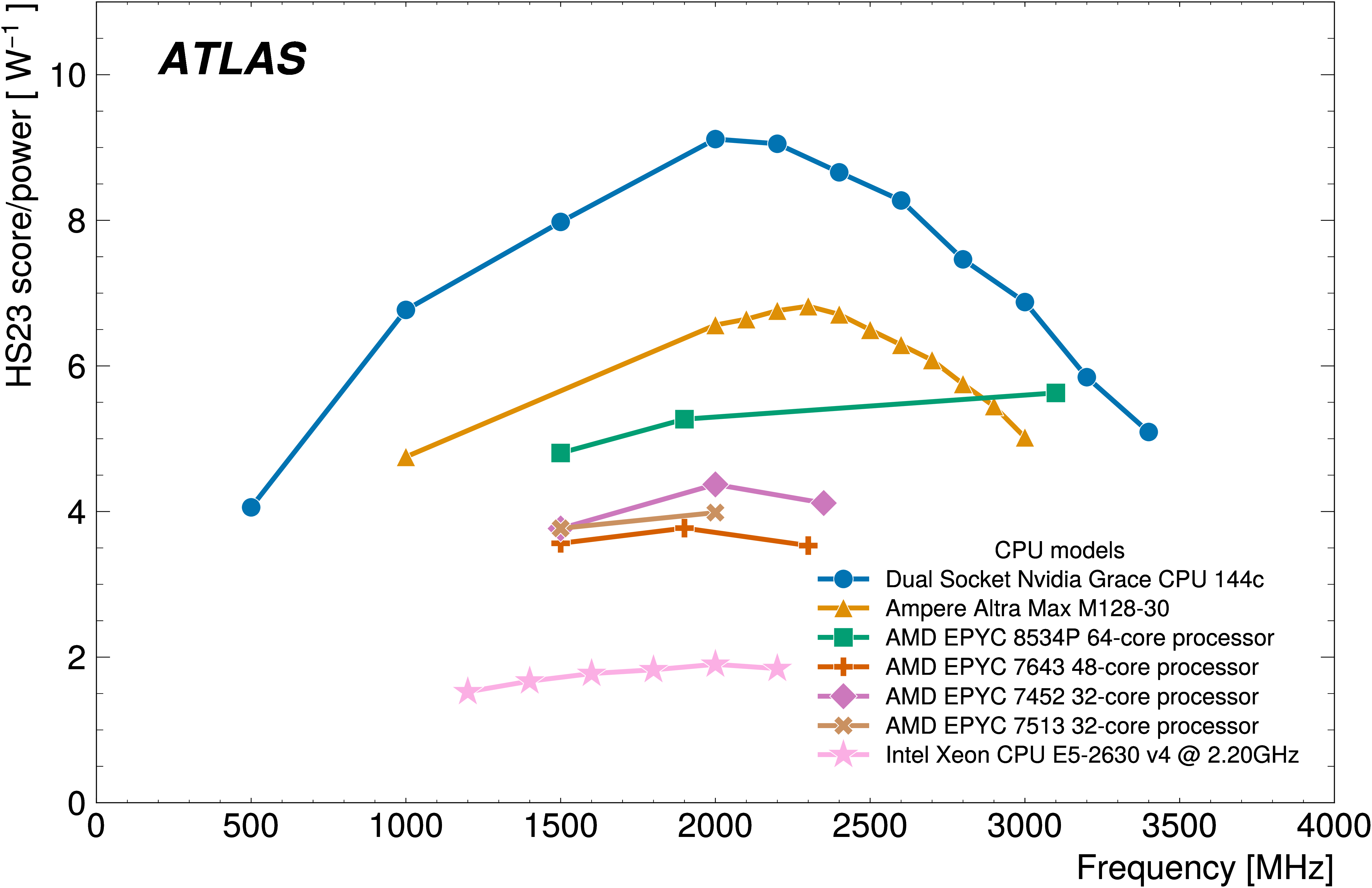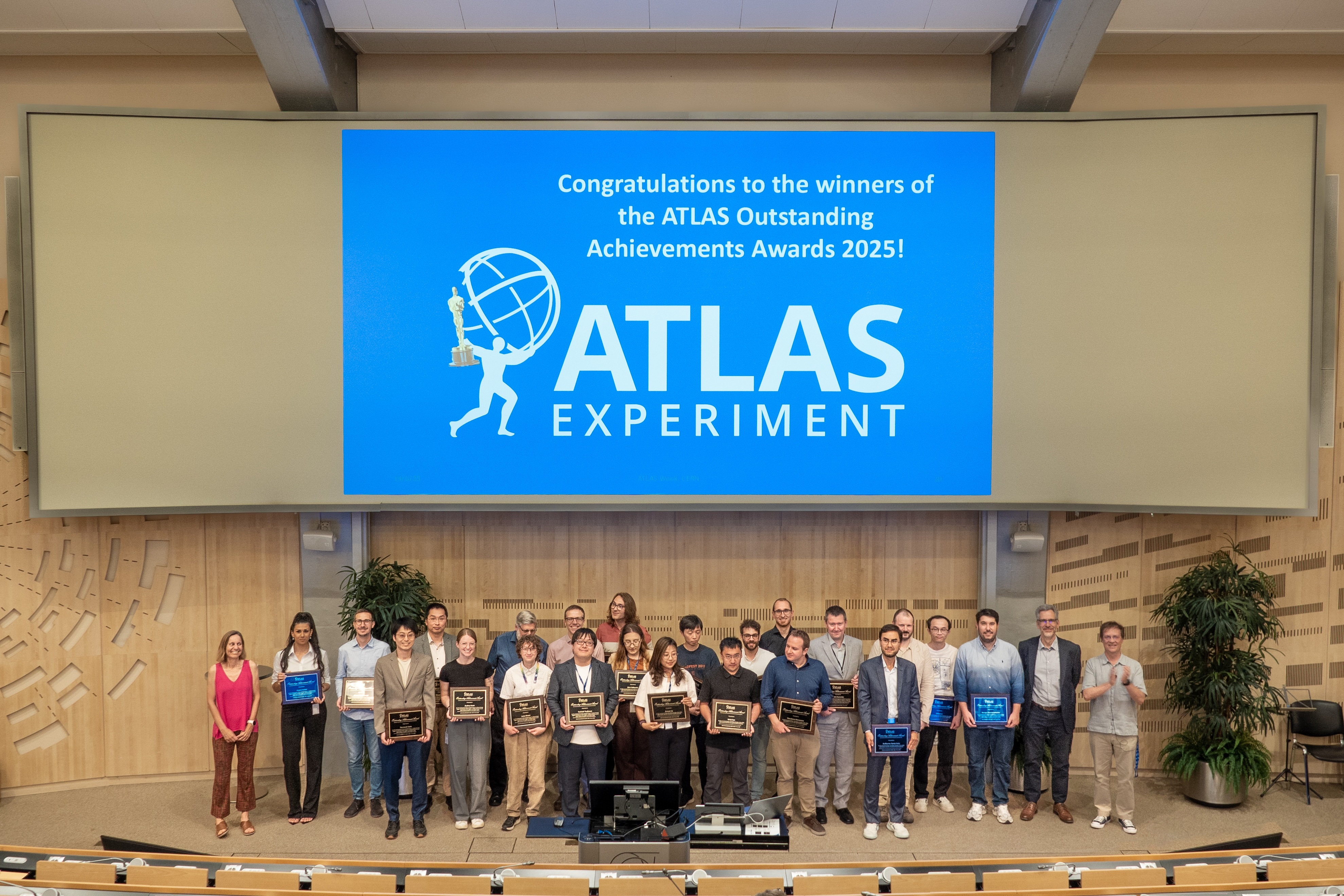ATLAS awards Long Shutdown 1 achievements
25 June 2015 | By
The ATLAS Outstanding Achievement Awards 2015 were presented on 18 June to 26 physicists and engineers, in 11 groups, for their excellent work carried out during Long Shutdown 1 (LS1).
Nominations came from across the collaboration, in areas such as Technical Coordination, detector systems, and activity areas including upgrade, combined performance and outreach. The Collaboration Board Chair Advisory Group examined each of the 92 nominations to make their final selections.







Gabriel Facini (University of Chicago) and Anthony Morley (University of Sydney) were recognised for their outstanding contribution to improving track reconstruction in dense environments. "It's easy to work in a group like this, where we have a culture that was set up by Andi Salzburger, who makes everything calm and relaxed," said Facini. "We got to collaborate with the tau, the b-tagging and the jet groups. It was a joy more than anything else."
David Adams (Brookhaven National Laboratory) and Pierre-Antoine Delsart (CNRS) received awards for leading and implementing crucial changes to jet and Etmiss software and development of related xAOD dual use tools during LS1. Tadashi Maeno (also of Brookhaven) was recognised for his contributions to the design, development and commissioning of innovative new distributed computing software critical to the LS1 S&C upgrade programme and the Run 2 physics programme, including JEDI and the Event Service.
James Frost (University of Oxford) was awarded for his contribution to the Data Preparation area, particularly for serving as PROC and DQ convenor. "It's an area that's very pleasant to work in, and I thank the convenors throughout for making it so," said Frost. "But of course, it's one of those areas where the smoother the job is done, the more invisible it is. Data just smoothly arrives by magic, which is how it should be. So thank you everybody."
Ewa Stanecka (Polish Academy of Sciences) was awarded for her work in the Inner Detector DCS (Detector Control System). "My award recognizes the efforts of many people involved in the Inner Detector DCS and people who worked hard to keep the tracker in the best possible shape to record data," she said.
Bruce M. Barnett (Rutherford Appleton Laboratory) was awarded for his contribution to the Level 1 calorimeter trigger over many years, and in particular in leading the system successfully through LS1. Frederic Rosset and Cedric Sorde (both with CERN) were recognised for their contribution to the opening and closing process of the ATLAS experiment during LS1.
Nominations came from across the collaboration, in areas such as Technical Coordination, detector systems, and activity areas including upgrade, combined performance and outreach. The Collaboration Board Chair Advisory Group examined each of the 92 nominations to make their final selections.
Koichi Nagai (University of Oxford) was recognised for his dedication to SCT operations and Run 2 commissioning. "It would not have been possible for me to complete my work during LS1 without support from many colleagues in ID Environment team and SCT DCS team," said Nagai.
Gary Drake (Argonne National Laboratory), Irakli Minashvili (JINR) and Stanislav Nemecek (Academy of Sciences of the Czech Republic) were awarded for their work leading to the improved reliability Low Voltage Power Supplies and the consolidation of the Front-End electronics of the Tile Hadronic Calorimeter for Run 2.
Jiri Masik (University of Manchester), Mark Sutton (University of Sussex), and Dmitry Emeliyanov and Stewart Martin-Haugh (both with STFC) were recognised for the drastic improvements in performance, timing and flexibility of the ATLAS Trigger Tracking software. "It's a great honour and it's not just us standing here, but the whole group," said Emeliyanov.
Moritz Backes and Michael Rammensee (both with CERN), Yu Nakahama (KEK), Catrin Bernius (New York University), and Tim Martin and Elisabetta Pianori (both with University of Warwick), received awards for their dedication to the implementation and commissioning of the complex ATLAS Run-2 trigger menu. "This award is acknowledgement not just for an individual, but for a team. Not just for people standing here today, but for the entire trigger community as a whole," said Martin.
Guido Volpi (University of Pisa and INFN) was recognised for his original, crucial and extended work on designing the Fast Tracker system (FTK) and its simulation. Nicholas Styles (DESY) received his award for his continuing work to establish and allow simulation and reconstruction of the Inner Detector for Phase II upgrade layouts.







